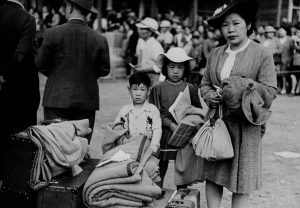
Execution of Louis Riel
For my final inquiry project, I decided to look at how teachers might incorporate student-made films in the Social Studies classroom in an effort to better understand historical events. The idea partially came from my experience of having to create a group video in my own Social Studies 9 class. As I remember, we were assigned a historical event (in our case, the execution of Louis Riel) and tasked with recreating and filming our interpretation of the event based on our readings. I must admit, ours was somewhat of a disaster, but I vividly recall some of the better group videos in the class. I think part of the problem with the project was that we were assigned events, rather than given a choice. Also, we were quite limited with technology at the time, lacking editing tools or internet. This is why I believe such a project, managed properly, could be highly effective in the current classroom.

Japanese Internment
So why bother with such a project? I think that having students recreate or interpret historical events, especially social injustices, can add to students’ understanding of the significance and engage their critical thinking skills. By actually putting themselves in the position of historical characters and having them script the events from their own interpretation, students can gain deeper empathy in comparison to simply reading about the events in their course materials. Doing film projects as a group also fosters those core competencies of collaboration and cooperation; allowing students to work together to write their own storyboards, plan, script and film their visions. Finally, students are already competent producers of media and this kind of project is very well suited to their interests and will be an important skill as media competency becomes increasingly necessary in the job market.
The great thing is that there are a number of ways students could approach a film project. They might choose to recreate a famous speech or historical battle, they could create a news-style interview with victims of social injustices, or they could create an artistic storyboard to tell the story.
This kind of project takes a significant amount of planning and oversight. Steps in the process would have to be carefully managed in order to not let groups get left behind. Regardless, the learning and takeaway from students would outweigh the possible problems. This wouldn’t be my first priority as a new teacher, but with the experience, right class and planning, it could be a great learning experience.
Leave a Reply